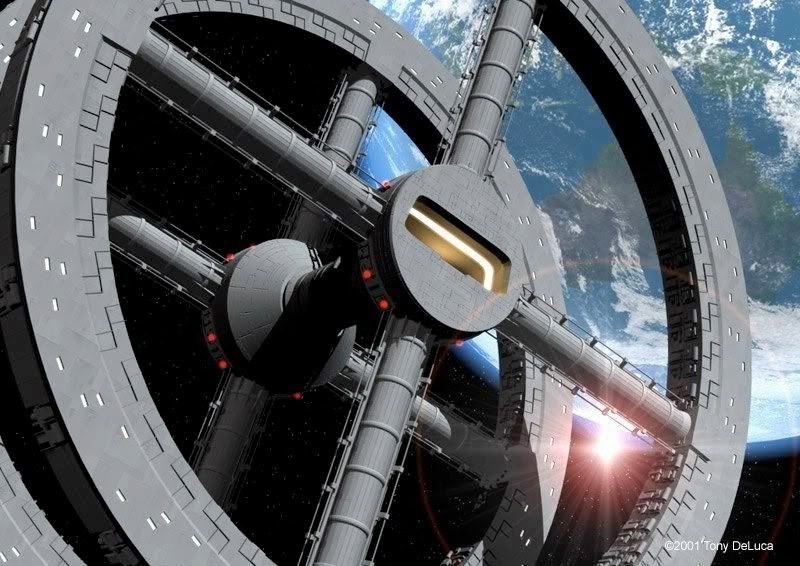ONLY if you don't have a cheap LEO transport system - as I said, in this case, you'll have to wait a long time before you make a profit.
Once you do, setting up an asteroid mining operation in a decade should be feasible.
1) A cheap LEO transport system doesn't exist and likely won't exist in the near future.
Likely?
Well, NASA won't make one, that's for sure.
But, as said, there are convincing proposals. For example Skylon; and here's an old one - G O'Neill mentioned it in "the high frontier" - mass drivers 'floating' via balloons at a high altitude above Earth (if you read the full details from the book, it will sound a lot less silly).
2) There are many other obstacles to establishing an asteroid mine. I've already mentioned rare launch windows and long trip times. There is also the fact that humanity's mining experience comes from an environment with liquid water, air, and gravity. Mining and civil engineering in microgravity and vacuum is something we have virtually zero experience in. Acquiring this experience would be time consuming and expensive.
I find your discussed objections regarding delta v and launch windows to Nereus not much of an impediment at all - as long as you travel to Nereus (or another NEO) to stay.
About 'mining experience' - this belongs to the category of eminently solvable obstacles that are considered game-stoppers (much like developing new space suits).
Even from Earth, we can theoretically deduce many of the adjustments we need to make to our machines and techniques for mining in 0g. There will be unforseen surprises, which will slow us down at the beginning, yes - but it won't take us long to solve them.
In any new field, experience is gained rapidly - as the recent history proved.
Unlike building AIs capable of autonomous mining or robot bodies versatile enough - which, for all we know, is not even possible until we reach a degree of nanotechnology comparable to living tissue.
A mining business would mean transporting heavy ore all the way to earth. Any propulsion system that uses chemical energy would be inadequate for this task (beyond, perhaps, transporting the first machines and the personnel to the mining site), if you want a profit - regardless of fuel being mined from the moon, etc.
You must send the ore using either mass drivers (solar or nuclear powered) or using nuclear propulsion.
If you were moving between the asteroid and earth's surface, this would be so.
If you are moving between a near earth asteroid and EML1, round trip could be as low as 2 km/s. Chemical is more than adequate for this delta V budget.
Indeed, chemical reactions simply don't generate enough energy. The craft so powered are too expensive to build and maintain, use FAR too much fuel, are too slow, too heavy, have too many failure modes.
A true interplanetary society must use nuclear power (fission or fusion); nothing less suffices for easy (more or less) interplanetary transport.
This is a common misconception. Given orbital propellant depots, chemical is more than adequate. EML1 and EML2 are two key locations. Having propellant, water and air at these locations would change the game.
I disagree.
Unless we are talking about astronomical amounts of chemical fuel (as per the rocket equation) situated at EML1 or EML2 or anywhere else (which, of course, require money to be put there), the launch windows towards Mars or an NEO or another human colony will be few and far between.
The ships' speed will be low - meaning VERY LONG travel time.
The ship will have to be VERY LIGHT - meaning little commerce.
Etc.
As said - there's not enough energy in chemical fuels to create anything resembling easy interplanetary transport, anything resembling interplanetary trade.
Chemical propulsion is yesterday's news.
During the last 80 years, it proved it's not capable of getting us efficiently out of our gravity well.
Simple calculations prove it necessitates VERY long travel times and is capable of carrying VERY little mass at the interplanetary level.
Mass drivers are a potential game changer. And the airless moon is amenable to mass drivers. Developing and gaining experience with mass drivers on our close neighbour Luna is more doable than developing this technology on a remote asteroid.
Plus, mass drivers are another technology fully within our capabilities to build.

